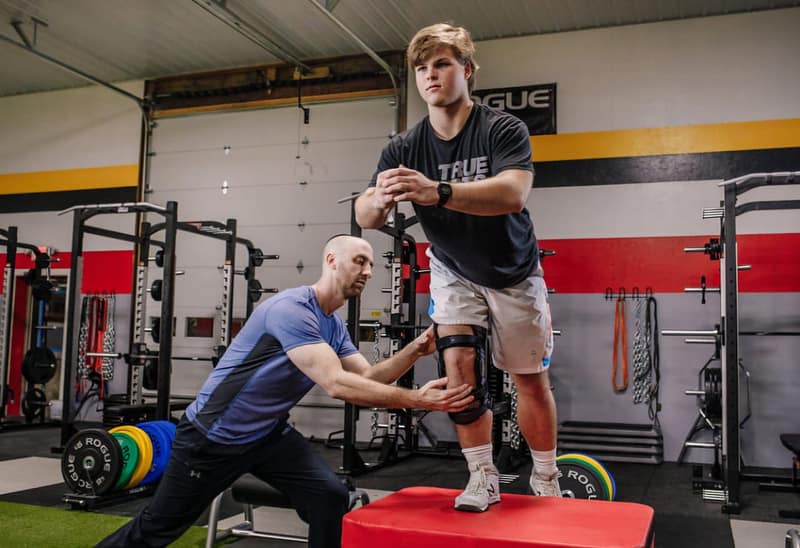Frequently Asked Questions
How does a physio background benefit personal training clients?
A physiotherapist brings deep knowledge in biomechanics, injury prevention, and rehabilitation, which helps in creating safer and more effective training plans that align with clients' physical limitations and goals.
How do personal trainers work with physios for client rehabilitation?
At FFC Wellness, personal trainers collaborate with physiotherapists by implementing tailored exercise programs based on the physio’s diagnosis and treatment plan, ensuring smooth progression from rehab to full fitness.
What is the role of a physiotherapist in patient care?
Physiotherapists are critical in assessing physical health, treating injuries, restoring mobility, managing pain, and educating patients for long-term wellbeing, serving as a bridge between medical treatment and fitness.
How does a physiotherapist create a treatment plan?
Treatment plans are developed from a thorough assessment of the client’s injury history, movement patterns, and personal goals, then executed using manual therapy, targeted exercises, and measurable milestones.
How do physios help personal trainers with client assessments?
Physiotherapists provide insights into joint mobility, muscular imbalances, and injury risk, enabling personal trainers to safely tailor fitness programs and adjust exercises for specific client needs.
Do physiotherapists work with athletes to prevent injuries?
Yes. At FFC Wellness, physiotherapists collaborate with athletes to identify and correct biomechanical inefficiencies and implement conditioning strategies that minimize the risk of sports injuries.
Can a physiotherapist help with post-surgery recovery?
Absolutely. Physiotherapists design post-operative rehab protocols that restore range of motion, rebuild strength, and support a safe return to training under close supervision.
What techniques do physiotherapists use for rehabilitation?
Common techniques include manual therapy, joint mobilization, dry needling, therapeutic exercises, neuromuscular coordination drills, and functional movement retraining.
How can physiotherapy enhance personal training results?
By improving clients’ functional movement, addressing pain or imbalances, and setting a safe foundation, physiotherapy enhances overall training effectiveness and reduces injury recurrence.
What assessments do physiotherapists perform on clients?
Assessments cover posture analysis, joint range of motion, muscular strength, balance, gait, and functional movement tests to detect restrictions and guide personalized care.
What rehabilitation programs do physiotherapists recommend?
Rehab programs may include strength conditioning, flexibility routines, balance training, proprioception exercises, and sport-specific drills designed to match clients’ needs and goals.
How can trainers integrate physiotherapy into fitness plans?
Trainers can align warm-ups, strength routines, and recovery workouts with physiotherapy recommendations—tracking progress and maintaining clear communication with the physio to ensure client safety.
What injuries do physiotherapists commonly treat with athletes?
Common sports injuries include muscle strains, ligament sprains, tendinopathies, overuse conditions, and post-surgery recovery following procedures like ACL reconstruction.
How do physiotherapists collaborate with personal trainers?
Collaboration involves sharing assessment findings, aligning goals, adjusting training loads, and co-developing progression plans so that rehab and fitness seamlessly complement each other.
What is the recovery timeline with physiotherapy?
Recovery depends on the injury severity; minor issues may resolve in weeks, post-operative rehab may require 8–12 weeks or more, with clear timelines set by the physiotherapist during planning.
How do personalized treatment plans benefit clients?
Tailored plans ensure exercises target individual weaknesses or imbalances, efficiently promoting recovery and reducing the chance of reinjury or persistent pain.
What is the role of functional movements in rehab?
Functional movements—like squats or lunges—mimic real-life activities to restore coordination, strength, and mobility in the contexts most relevant to clients’ daily lives or sports.
How can physiotherapy assist in injury prevention?
By identifying biomechanical faults, addressing weak links through targeted exercises, and educating clients on safe movement, physiotherapy helps preemptively reduce injury risk.
What certifications should trainers pursue for physio knowledge?
Trainers may seek certifications in corrective exercise, functional movement screening (FMS), or post-rehabilitation fitness to better integrate physio-informed techniques into their programs.
How can physiotherapists assist with mobility improvement?
They use joint mobilization, stretching, neuromuscular re-education, and personalized exercise plans designed to enhance flexibility, joint function, and control.
What role does physiology play in personal training?
Physiological knowledge allows trainers to understand how the body adapts to exercise, how injuries impact movement, and how physiotherapy-informed strategies can maintain physical health.
How does physiotherapy address chronic pain in clients?
Through education, manual techniques, exercise, and lifestyle changes, physiotherapy tackles underlying pain contributors—reducing dependency on medications and improving quality of life.
What exercises do physiotherapists recommend for recovery?
Therapists may recommend resistance training, stability drills, low-impact cardio, and postural correction exercises tailored to the client’s injury and goals.
How can trainers monitor client progress with physiotherapy?
Trainers can track improvements in pain, strength, range of motion, and functional performance, adjusting fitness routines based on feedback from physiotherapists.
What are common misconceptions about physiotherapy?
Many believe physiotherapy is only for severe injuries or that it’s the same as massage. In reality, it addresses a broad spectrum of issues—from chronic pain and injury prevention to performance optimization.
How do physiotherapists handle post-surgery restrictions?
Therapists respect medical recommendations by adjusting load, timing, and types of exercise—gradually progressing mobility and strength to ensure safe rehabilitation.
What preventative measures do physiotherapists suggest?
Suggestions include strength conditioning, flexibility programs, posture correction, ergonomic adjustments, movement education, and regular functional check-ups.
How can trainers support clients during physiotherapy?
Trainers reinforce home exercise compliance, track functional tasks prescribed by the physio, and adjust training programs to align with rehab progress—providing encouraging accountability at each stage.
What is the impact of physiotherapy on athletic performance?
Physiotherapy enhances performance by optimizing movement efficiency, improving recovery, reducing injury setbacks, and allowing athletes to train with confidence and resilience.
How do physiotherapists educate clients about injuries?
Therapists provide clear explanations of injury mechanics, prevention strategies, exercises, and lifestyle modifications—empowering clients to understand their bodies and manage their health proactively.







